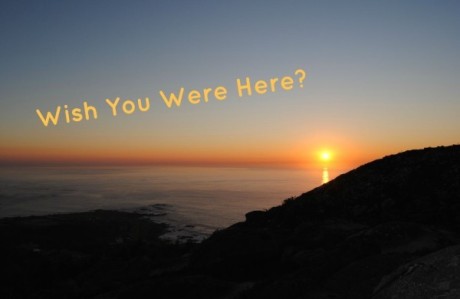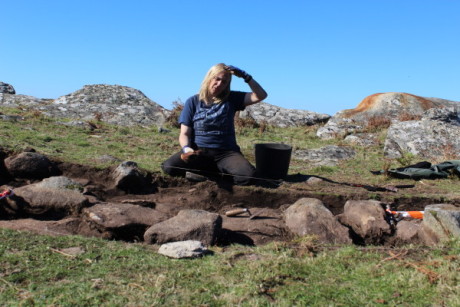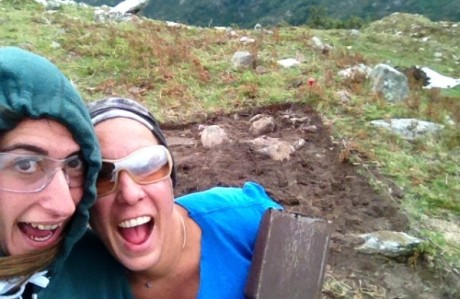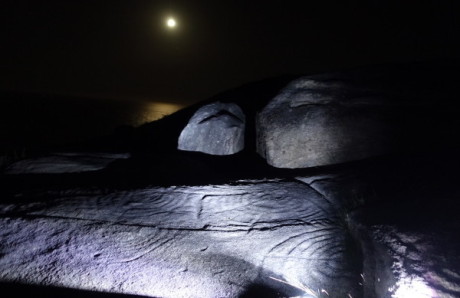
Picture this: you’re sitting at a beachside café, feet up, cold bevvie in hand, watching a sunset and talking endless amounts of nonsense with your friends. The table is strewn with the remnants of Midas’ feast. There is laughing. It is NOT RAINING.
Even better, you’ve just spent an entire day outside in the glorious weather, on a breathtaking hillside staring down at the twinkling sea. Your body has that after-workout, after-swim, ready for a good sleep feeling…
Is this heaven? Nope. It’s Spain!
Galicia, to be specific, and the wonderful, healthy, fun and inspiring things I’m looking forward to doing there include digging up Iron Age hillforts with the Costa dos Castros project – our Galician partners and adventure buddies. It’s very rare in an archaeologists’ life to be invited along at the very early stages of a project like Costa dos Castros, and as we prepare for the October dig I thought it would be a great time to share some of the reasons why I’m so excited about it.
First, there is the archaeology. I’m American – so by now all of you are used to my (endearing?) propensity for superlatives. But seriously, guys, it’s BEYOND. Speshballs. Superduperamazelicious. As this is only the first full season of excavation, there is so much about the site that is not yet known. What has been found, however – including the massive hillfort structures, rock art, and special finds such as the ‘hacha de talón’ bronze axe – indicates that this site was a powerful and strategic outpost of the Atlantic culture from the late Bronze Age (9th century BC) through to the late Iron Age in the 1st century AD. But what happened then?
The project is centred around excavating three Iron Age hillforts (castros) which have similar characteristics and are all high up on the hills, visually controlling approximately seven kilometres of coastline. The research aim is to understand the occupation strategy of this stretch of coast in the Iron Age.

This curious horse stands immediately behind a newly-opened trench at Chavella. The site is so high up that when the fog rolls in, you feel like you’re on the top of the world!

View from atop Chavella hillfort, looking south towards Portugal. Majestic!
At one of the hillforts, A Cabeciña, we’ll be looking for evidence to establish deeper understanding of the structure, also with an eye towards creating a resource for visitors (which will be a huge benefit to the local economy) when site restoration begins in 2016. At Chavella hillfort, where DV will be digging in October, we will assess the state of conservation of the archaeological remains, establish a chronology and see if we can confirm a medieval reoccupation of the site. The third fort, Cano dos Mouros, is still at the very early stages of clearing and carrying out topographic survey. Say it with me, people: we’ve got it all to play for!
So, Xosé and his team pretty much had us at ‘hello’, but it takes more than just the lure of sexy archaeology to turn our heads so completely. All of DV’s projects so far have been about much more than just doing archaeology – we look for sites that we can work with in a scheme of heritage-led regeneration. In other words, what are the other benefits that doing archaeology can bring to the table? For us, it’s been putting heritage attractions back on the map through increased visitor numbers, raising site profiles internationally, attracting new funding, providing training to the community, and handing over the knowledge generated by the excavations along with a sustainable activity plan.
Costa dos Castros has all of this in spades, and one of the major project aims is to assist the local economy of a rural area (Oia) and empower its community through sustainable tourism and heritage management. The site is supported by local residents, and is run by a group of local land cooperatives. We can’t wait to get our boots on the ground and see what it looks like when a community truly takes ownership of its resources, and everyone throws their back into making something new and special for the benefit of all. Could this model work in the UK? It doesn’t seem likely, but one can hope…
Did I mention that they are planting an educational arboretum, meant to replicate the natural species that would have forested the area prior to the planting of more easily harvested eucalyptus? How cool is that?! I’d quite like to replant one of England’s legendary old forests, and stock it with aurochs. Yes please! By the way, what’s the plural of aurochs? Aurochses? Aurochii? Aureese?
And finally, there’s Xosé and Ursula, who many of you will remember from the Leiston Abbey videos this year. They joined us as the first brave wave of this archaeological exchange, and it was fantastic getting to know them and learning more about the many ways archaeology is different, and the same, in Spain. Let me tell you: they are FUN. And smart. And very very good with mattocks! So another big reason I can’t wait to head to Spain is to see them again, talk some nonsense, do some laughing, and eat great food. Roll on October!


